OCZ Vertex 3 MAX IOPS & Patriot Wildfire SSDs Reviewed
by Anand Lal Shimpi on June 23, 2011 4:35 AM ESTLet's start with the elephant in the room. There's a percentage of OCZ Vertex 3/Agility 3 customers that have a recurring stuttering/instability issue. The problem primarily manifests itself as regular BSODs under Windows 7 although OCZ tells me that the issue is cross platform and has been seen on a MacBook Pro running OS X as well.
How many customers are affected? OCZ claims it's less than two thirds of a percent of all Vertex 3/Agility 3 drives sold. OCZ came up with this figure by looking at the total number of tech support enquiries as well as forum posts about the problem and dividing that number by the total number of drives sold through to customers. I tend to believe OCZ's data here given that I've tested eight SF-2281 drives and haven't been able to duplicate the issue on a single drive/configuration thus far.
Most of the drives were from OCZ and I've tested them all on four separate platforms - three Windows 7 and one OS X. The latter is my personal system where I have since deployed a 240GB Vertex 3 in place of Intel's SSD 510 for long term evaluation. If you're curious, the 3 months I had the 510 in the MacBook Pro were mostly problem-free. It's always tough narrowing down the cause of system-wide crashes so it's hard to say whether or not the 510 was responsible for any of the hard-resets I had to do on the MacBook Pro while it was deployed. For the most part the 510 worked well in my system although I do know that there have been reports of issues from other MBP owners.
But I digress, there's a BSOD issue with SF-2281 drives and I haven't been able to duplicate it. OCZ has apparently had a very difficult time tracking down the issue as well. OCZ does a lot of its diagnostic work using a SATA bus analyzer, a device that lets you inspect what's actually going over the SATA bus itself rather than relying on cryptic messages that your OS gives you about errors. Apparently sticking a SATA bus analyzer in the chain between the host controller and SSD alone was enough to make the BSOD problem go away, which made diagnosing the source of the BSOD issue a pain.
OCZ eventually noticed odd behavior involving a particular SATA command. Slowing down timings associated with that command seems to have resolved the problem although it's tough to be completely sure as the issue is apparently very hard to track down.
OCZ's testing also revealed that the problem seems to follow the platform, not the drive itself. If you have a problem, it doesn't matter how many Vertex 3s you go through - you'll likely always have the problem. Note that this doesn't mean your motherboard/SATA controller is at fault, it just means that the interaction between your particular platform and the SF-2281 controller/firmware setup causes this issue. It's likely that either the platform or SSD is operating slightly out of spec or both are operating at opposite ends of the spec, but still technically within it. There's obviously chip to chip variance on both sides and with the right combination you could end up with some unexpected behaviors.
OCZ and SandForce put out a stopgap fix for the problem. For OCZ drives this is firmware revision 2.09 (other vendors haven't released the fix yet as far as I can tell). The firmware update simply slows down the timing of the SATA command OCZ and SF believe to be the cause of these BSOD issues.
In practice the update seems to work. Browsing through OCZ's technical support forums I don't see any indications of users who had the BSOD issue seeing it continue post-update. It is worth mentioning however that the problem isn't definitely solved since the true cause is still unknown, it just seems to be addressed given what we know today.
Obviously slowing down the rate of a particular command can impact performance. In practice the impact seems to be minimal, although a small portion of users are reporting huge drops in performance post-update. OCZ mentions that you shouldn't update your drive unless you're impacted by this problem, advice I definitely agree with.
What does this mean? Well, most users are still unaffected by the problem if OCZ's statistics are to be believed. I also don't have reason to believe this is exclusive to OCZ's SF-2281 designs so all SandForce drives could be affected once they start shipping (note that this issue is separate from the Corsair SF-2281 recall that happened earlier this month). If you want the best balance of performance and predictable operation, Intel's SSD 510 is still the right choice from my perspective. If you want the absolute fastest and are willing to deal with the small chance that you could also fall victim to this issue, the SF-2281 drives continue to be very attractive. I've deployed a Vertex 3 in my personal system for long term testing to see what living with one of these drives is like and so far the experience has been good.
With that out of the way, let's get to the next wave of SF-2281 based SSDs: the OCZ Vertex 3 MAX IOPS and the Patriot Wildfire.
The Vertex 3 MAX IOPS Drive
In our first review of the final, shipping Vertex 3, OCZ committed to full disclosure in detailing the NAND configuration of its SSDs to avoid any confusion in the marketplace. Existing Vertex 3 drives use Intel 25nm MLC NAND, as seen below:
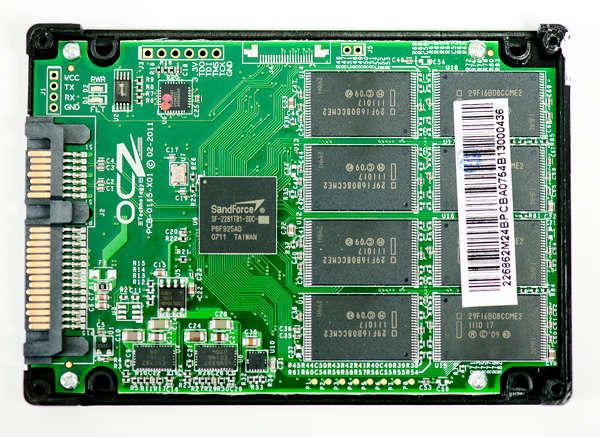
A 240GB Vertex 3 using 25nm Intel NAND
Not wanting to be completely married to Intel NAND production, OCZ wanted to introduce a version of the Vertex 3 that used 32nm Toshiba Toggle NAND - similar to what was used in the beta Vertex 3 Pro we previewed a few months ago. Rather than call the new drive a Vertex 3 with a slightly different model number, OCZ opted for a more pronounced suffix: MAX IOPS.
Like the regular Vertex 3, the Vertex 3 MAX IOPS drive is available in 120GB and 240GB configurations. These drives have 128GB and 256GB of NAND, respectively, with just under 13% of the NAND set aside for use as a combination of redundant and spare area.
The largest NAND die you could ship at 32/34nm was 4GB - the move to 25nm brought us 8GB die. What this means is that for a given capacity, the MAX IOPS edition will have twice as many MLC NAND die under the hood. The table below explains it all:
| OCZ SF-2281 NAND Configuration | |||||||
| Number of NAND Channels | Number of NAND Packages | Number of NAND die per Package | Total Number of NAND die | Number of NAND per Channel | |||
| OCZ Vertex 3 120GB | 8 | 16 | 1 | 16 | 2 | ||
| OCZ Vertex 3 240GB | 8 | 16 | 2 | 32 | 4 | ||
| OCZ Vertex 3 MI 120GB | 8 | 8 | 4 | 32 | 4 | ||
| OCZ Vertex 3 MI 240GB | 8 | 16 | 4 | 64 | 8 | ||
The standard 240GB Vertex 3 has 32 die spread across 16 chips. The MAX IOPS version doubles that to 64 die in 16 chips. The 120GB Vertex 3 only has 16 die across 16 chips while the MAX IOPS version has 32 die, but only using 8 chips. The SF-2281 is an 8-channel controller so with 32 die you get a 4-way interleave and 8-way with the 64 die version. There are obviously diminishing returns to how well you can interleave requests to hide command latencies - 4 die per channel seems to be the ideal target for the SF-2281.


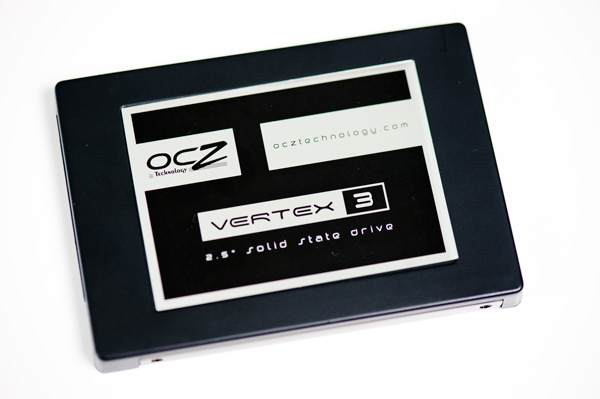
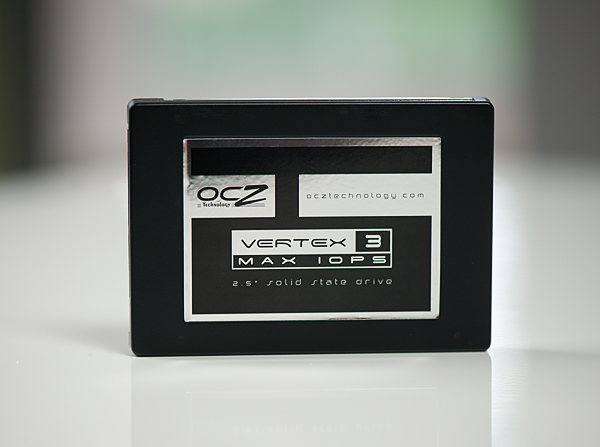
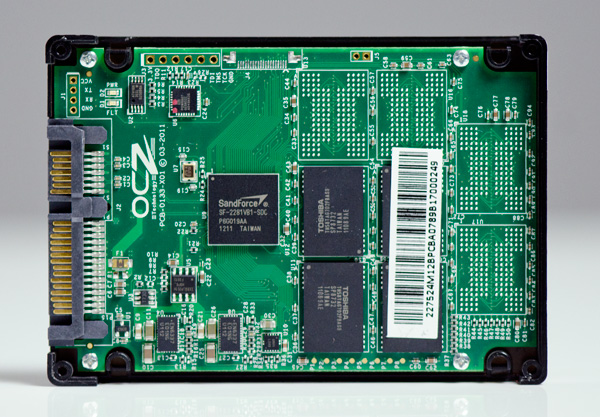
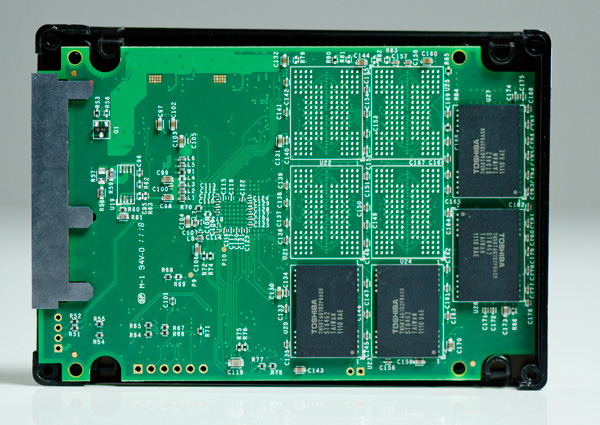
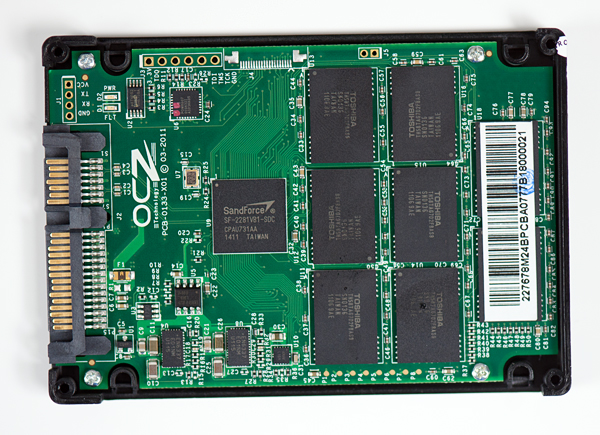
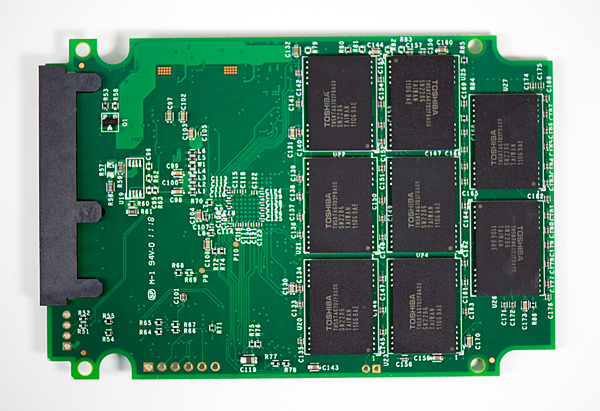








112 Comments
View All Comments
GullLars - Thursday, June 23, 2011 - link
I noticed the clear winner at your 4KB random read (QD3) test has been cleared from the chart. The C300 pushes over 90MB/s while the second highest, and the highest in this cart, is Vertex 3 240GB with 68MB/s. I feel this is worth noting, as the SF-2281 drives generally win with a good margin in many tests, but loose to a more than year old drive in small random reads at low queue depths.Bannon - Thursday, June 23, 2011 - link
Thanks for another good review Anand. I've been following the discussions in the Corsair and OCZ forums and while I'm interested in the super-fast speeds of the new SandForce drives I'm leery because of the problems a percentage of their customers are having. So, I was considering a 256GB Crucial M4 drive which seemed to do well in your review but was surprised when you recommended the Intel 510 drive as an alternative. Do you have concerns with the M4?ocz2004 - Thursday, June 23, 2011 - link
Hello everyone, as my first post in this thread let me identify myself as an OCZ employee. I’d like to thank everyone for their comments. Positive or negative, we appreciate all the feedback and take it very seriously throughout the organization. We continue to see a very small percentage of users with the BSOD issue but have made addressing this a high priority, and encourage any customers that have this or any issues to contact our customer service team. We have and will continue to work closely with SandForce and our platform partners for a final fix, and have spearheaded this effort among all manufacturers that utilize a SF solution. As mentioned in our previous public statement, we are also working on optimizations to the base code to minimize any performance delta associated with the temporary workaround. Thank everyone again for your support and feedback, and we will continue to work diligently on providing both premium performing and reliable SSDs to all our valued customers. We are willing to go above and beyond to make our customers happy; for anyone that is having this issue please contact support at drego @ ocz dot comtecsi - Thursday, June 23, 2011 - link
From Anand's comments:"It turns out that although the move from a hard drive to a decent SSD is tremendous, finding differences between individual SSDs is harder to quantify in a single real world metric...The best values in SSDs are going to be last year's models without a doubt."
It appears that the best desktop SSD value--by far--is grabbing a 64GB SATA II boot/app drive (paired with a big HD), which are often rebated to ~$70. Although SATA III and 120GB/240GB look great on a specialized SSD racetrack, in the real world the performance difference appears to be a 5-10%, while paying just 30% of the $250 cost for a SATA III 120GB drive.
Does this make sense or am I missing something? I was getting quite excited about SATA III and all the fawning over the Vertex 3, but this enthusiasm seems misplaced.
Impulses - Thursday, June 23, 2011 - link
Only issue with that is that after formatting and installing the OS, a 64GB SSD doesn't leave you a lot of extra space... Depending on your needs that may or may not be an issue. I got an 80GB Intel X25-M for my desktop last year and it's a little tight, I have the luxury of having enough space for a couple of games but I do rotate which ones I have on it... I'm looking at 120GB drives but I'm waiting for prices to come down a little.I got a 40GB X25-V for my netbook tho and it's just for that kinda system... Win7 and the basic kind of programs that I use on my netbook all fit fine within <25GB, and with only 1.5GB of RAM the size of the hibernate file isn't a big concern. Still got enough space for a couple of movies when I travel.
FunBunny2 - Thursday, June 23, 2011 - link
Over on Postgresql-performance, for one, there is not much love for anything less than full blown cap-backed SSDs, and even then, when used for database logs (not necessarily a good use of an SSD) 18 months is about the lifetime.So, using highly normalized (BCNF, which you shouldn't have to look up) X00 gig databases only on SSD (no HDD for logs and such) is a real torture test. Random access in a real world application. Oracle and MS have them. TPC, of course, has a bunch.
jdmstl - Thursday, June 23, 2011 - link
I had a problem with the Vertex 3 240GB in a new Thinkpad W520. The bluescreen occurred at relatively light or idle usage, but seemed to have nothing to do with power save features. I tried disabling all such features in the bios, as well as a number of logical software fixes to no avail.Finally, I simply returned the drive to Microcenter for a refund rather than deal with the issues. I never posted my problems to OCZ, although I read the related forum posts for clues.
I suspect that many people did the same, so I would not trust any defect rate figures based on number of forum posts. It would be more accurate to check the return rate, but I suspect that many people just ignore the BSODs and live with it without reporting any issue, assuming it will all work out eventually.
OCZ tries to deny or downplay issues without taking full responsibility. They did the same thing with JMicron controller problems a few years ago. (Not that any other brands were more honest or forthcoming.)
I think I will stick with Intel from now on, although I had good luck with 4 of the original Vertex Indilinx drives that are still running fine in my home desktop PCs.
jwilliams4200 - Friday, June 24, 2011 - link
OCZ is definitely the leader when it comes to their propaganda machine. It seems even Anand has gotten brainwashed by it.Concillian - Friday, June 24, 2011 - link
It really helps to read that page to put the performance picture in perspective. This kind of thing is difficult to get a feel for when looking at reviews.It's easy to tell which is faster from benchmarks, but it's not always easy to tell how much that speed will translate into actual perceivable improvement for daily workloads.
I think you should throw in a few "vs. rotating storage" charts in every SSD review just to help demonstrate the performance differences to those contemplating the jump to SSD. Many of your readers have made the jump and are looking at SSDs vs. SSDs, but I'll bet a fair amount are still looking at the value vs. a hard drive and haven't necessarily seen the history of all the articles that show these differences.
cactusdog - Friday, June 24, 2011 - link
I respect Anands opinions but the timing of his reviews and comments(regarding OCZ) makes it seem he is working with OCZ. Like he wont say anything negative unless OCZ have already addressed it.Its strange this review hit just after the new firmware 2.09 was released. The 2.09 firmware that is supposed to fix any BSOD issues.
Going back over previous reviews, Anand never mentioned any of the user complaints about slower 25nm nand (and the use of slower hynix or second rate Spectek nand) until AFTER OCZ had put out an official statement about it. Until OCZ had promised to swap drives and promised not to use dodgy nand again.
The point is Anand seems to have a direct line to OCZ and he will not address users concerns until AFTER OCZ has officially recognised it in some way.